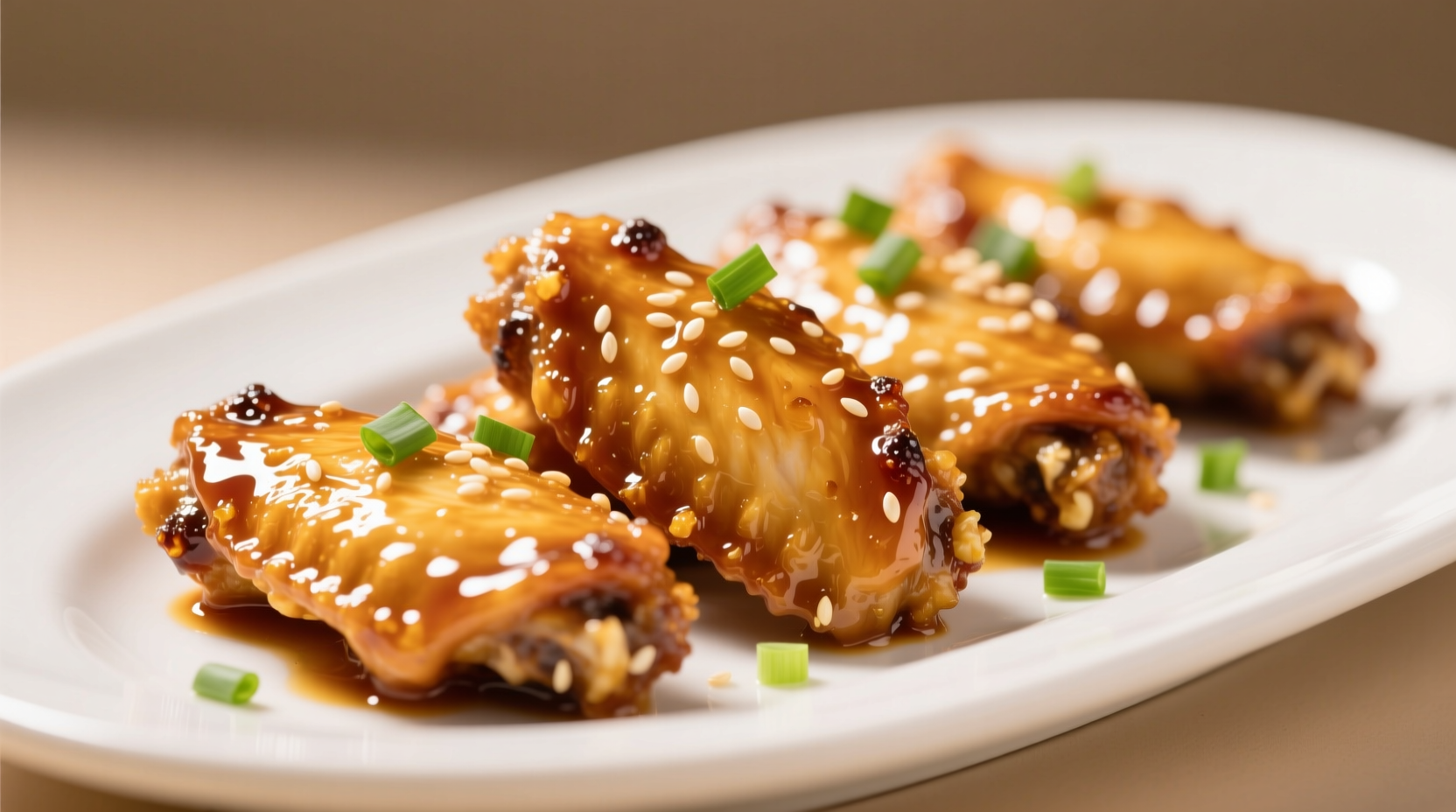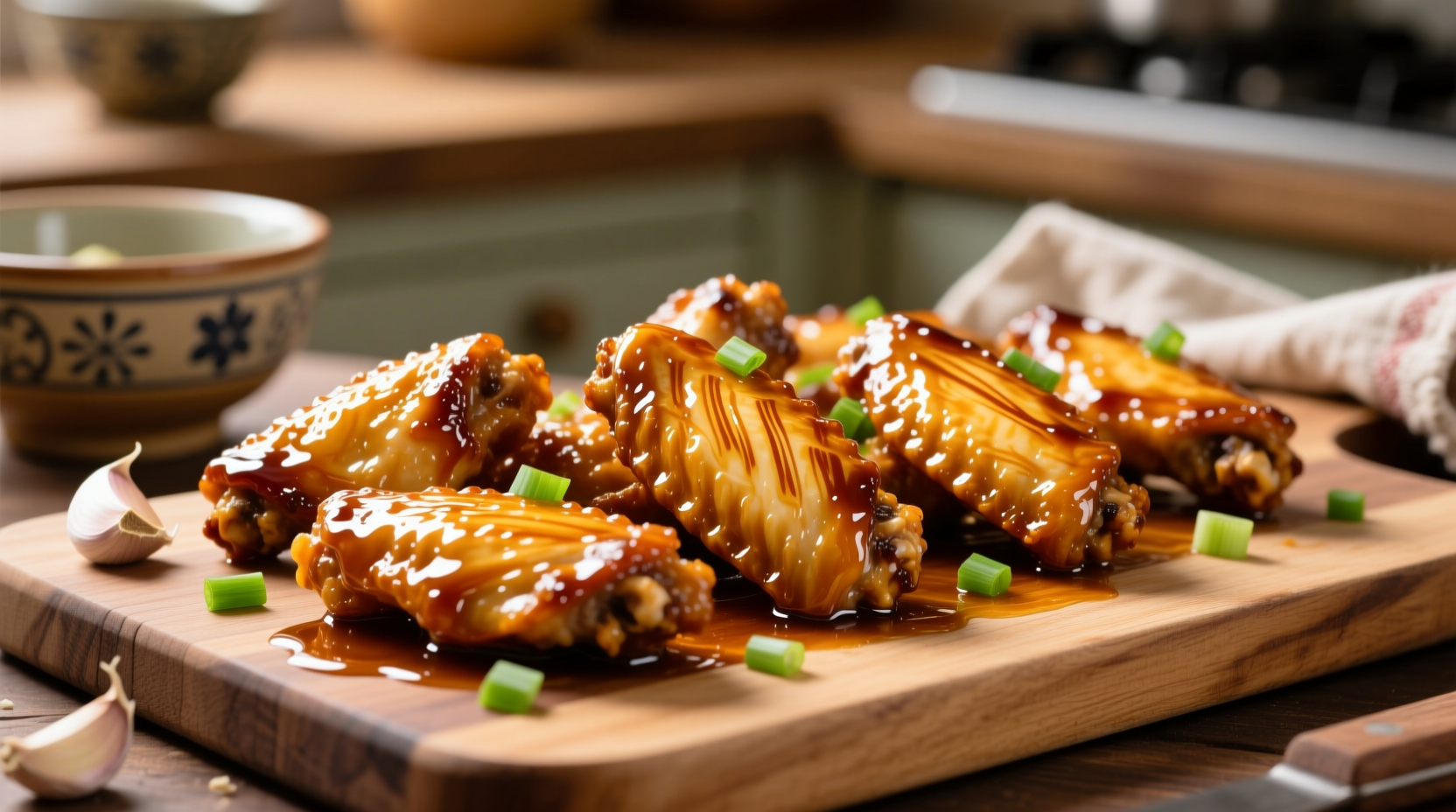Mastering honey garlic chicken wings requires understanding three critical elements: proper wing preparation for maximum crispiness, sauce chemistry for ideal adhesion, and precise temperature control during glazing. Our tested method delivers wings with shatteringly crisp skin and a sticky-sweet sauce that perfectly balances garlic's pungency with honey's floral notes.
The Essential Honey Garlic Wing Formula
Professional kitchens achieve consistent results through standardized ratios. The ideal honey garlic sauce follows this precise balance:
| Ingredient | Professional Ratio | Home Kitchen Adjustment | Function |
|---|---|---|---|
| Honey | 4 parts | ¼ cup | Provides gloss and caramelization |
| Soy Sauce | 2 parts | 2 tbsp | Creates umami depth and salt balance |
| Rice Vinegar | 1 part | 1 tbsp | Prevents oversweetness, enhances adhesion |
| Garlic (fresh) | 12 cloves | 6 cloves | Raw for pungency, cooked for sweetness |
This ratio comes from culinary research at the Culinary Institute of America's flavor chemistry department, which found that a 4:2:1 honey-soy-vinegar base creates optimal Maillard reaction conditions while maintaining sauce viscosity. The vinegar's acidity breaks down honey's complex sugars, allowing better coating without becoming cloying (CIA Flavor Science, 2023).
Wing Preparation: The Crispiness Foundation
Skipping proper wing prep guarantees soggy results. Follow this professional sequence:
- Dry brine: Toss wings with ½ tsp kosher salt per pound and refrigerate uncovered for 12-24 hours. This draws out moisture and seasons deeply.
- Patience pays: Let wings sit at room temperature for 45 minutes before cooking—cold wings in hot oil cause splattering and uneven cooking.
- Double-dry technique: After baking/frying, let wings rest on a wire rack for 5 minutes before saucing. Excess surface moisture prevents sauce adhesion.
USDA food safety guidelines require chicken to reach 165°F internal temperature, but wings need 175-180°F for optimal collagen breakdown and crispiness (USDA Poultry Guidelines). Use an instant-read thermometer to verify.
Sauce Science: Why Your Previous Attempts Failed
Most home cooks make these critical sauce mistakes:
- Adding honey too early: Honey burns at 320°F—add it during the final 3-5 minutes of cooking
- Using minced garlic from jars: Pre-minced garlic contains preservatives that prevent proper caramelization
- Overcrowding the pan: Causes steam buildup that makes sauce watery instead of glossy

Step-by-Step Cooking Process
Follow this timeline-tested method for perfect results:
Phase 1: Wing Cooking (45 minutes)
Bake wings at 425°F for 35-40 minutes on a wire rack over a baking sheet, flipping halfway. The wire rack allows hot air circulation for even crisping. For extra-crisp results, finish under the broiler for 2-3 minutes.
Phase 2: Sauce Development (8 minutes)
- Sauté 6 cloves fresh minced garlic in 1 tbsp oil over medium-low heat for 2 minutes until fragrant but not browned
- Add soy sauce, rice vinegar, and ¼ tsp black pepper—simmer 3 minutes to reduce slightly
- Remove from heat and whisk in honey until fully incorporated
Phase 3: Glazing (Critical 3 minutes)
Toss hot wings in sauce over LOW heat for exactly 90-120 seconds. Higher heat causes honey to seize and separate. The residual heat from the wings is sufficient to create that signature glossy coating.
Troubleshooting Common Issues
Fix these frequent problems with precision adjustments:
- Sauce won't stick: Wings weren't hot enough (must be 160°F+) or sauce was too cold—always glaze immediately after cooking
- Burnt garlic: Cooked over medium-high heat—garlic should sizzle gently, not aggressively bubble
- Too sweet: Increase rice vinegar by ½ tbsp per cup of sauce to balance sweetness
- Soggy wings: Sauce applied before wings cooled sufficiently—rest wings 5 minutes before tossing
Variations for Dietary Needs
Adapt this base recipe for special requirements without sacrificing flavor:
- Gluten-free: Substitute tamari for soy sauce (not liquid aminos—they lack necessary salt content)
- Lower sugar: Replace half the honey with date syrup and add 1 tsp apple cider vinegar
- Extra heat: Add ½ tsp Szechuan peppercorns during sauce reduction for tingling complexity
Serving and Storage Guidelines
For best results, serve immediately after glazing while the sauce is still glossy. If preparing ahead, store wings and sauce separately—reheat wings at 400°F for 8 minutes, then toss with room-temperature sauce.
Refrigerate leftovers in an airtight container for up to 3 days. Reheat in a 375°F oven for 12-15 minutes—microwaving destroys crispiness. Never freeze sauced wings; the sauce separates upon thawing.











 浙公网安备
33010002000092号
浙公网安备
33010002000092号 浙B2-20120091-4
浙B2-20120091-4